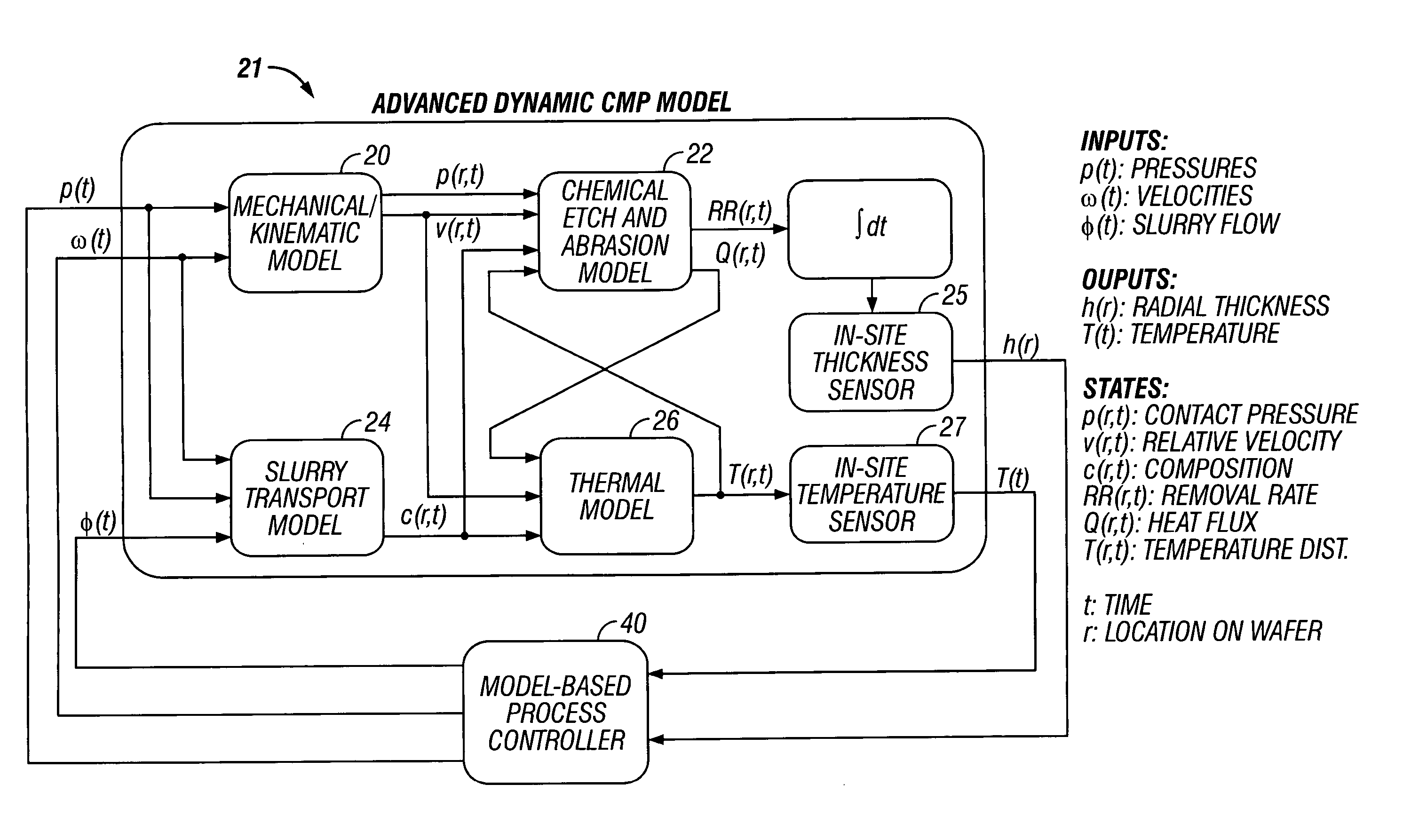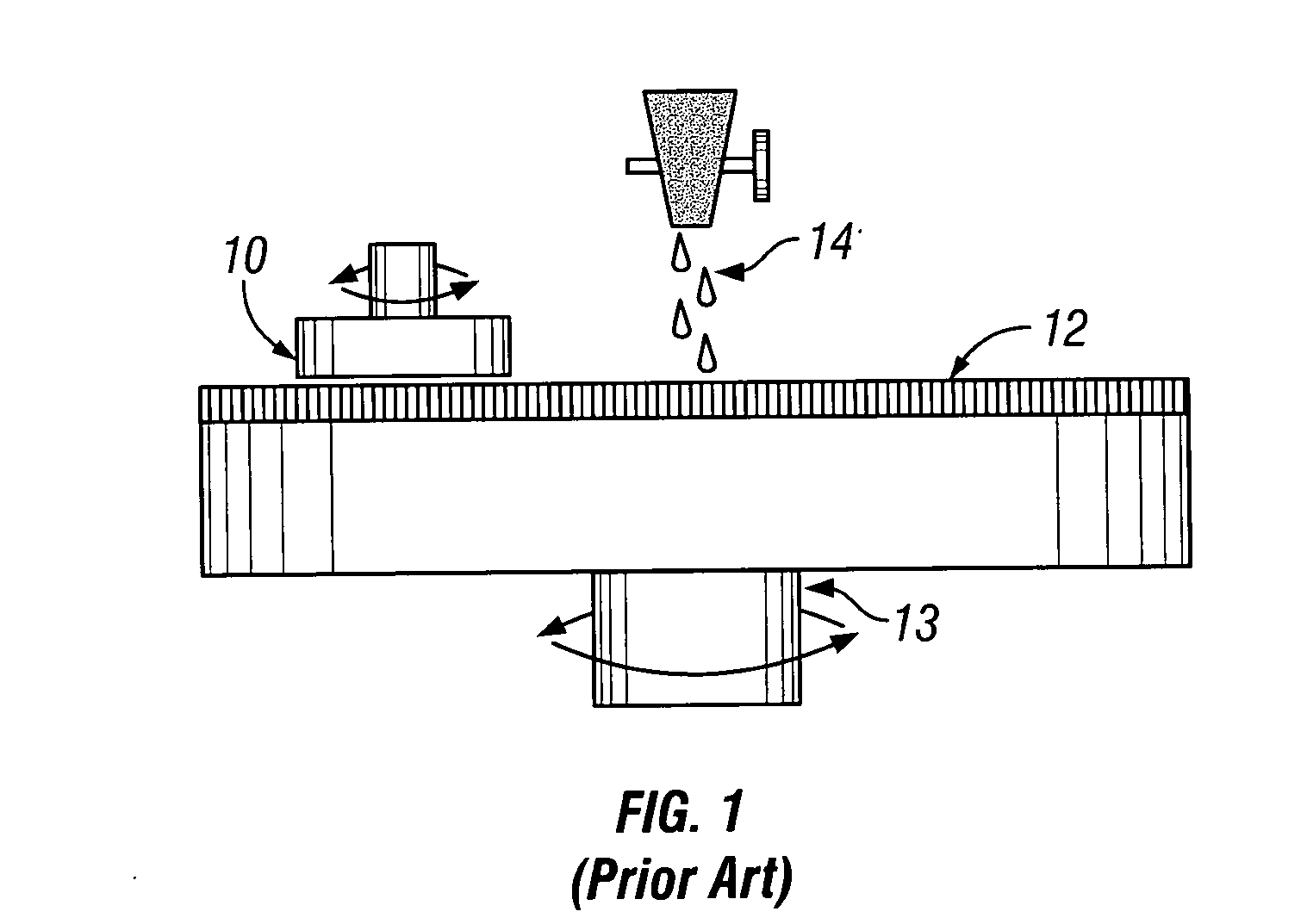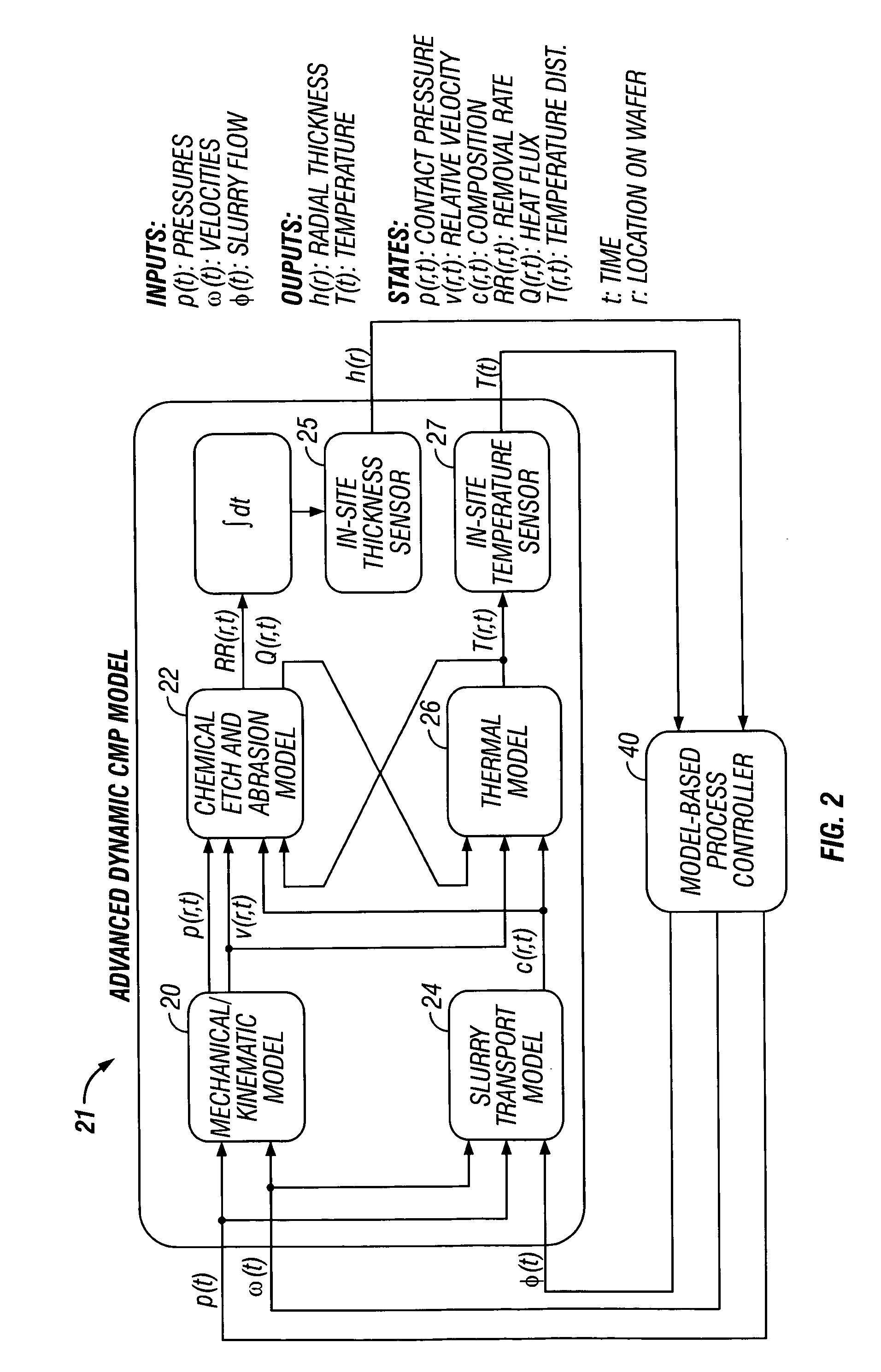Chemical-mechanical planarization controller
a controller and chemical technology, applied in the field of chemical-mechanical planarization, can solve the problems of limiting the kind of system performance that can be achieved, and achieve the effects of reducing the dynamic model of control, superior control performance, and maximum performan
- Summary
- Abstract
- Description
- Claims
- Application Information
AI Technical Summary
Benefits of technology
Problems solved by technology
Method used
Image
Examples
Embodiment Construction
In-Situ Sensing (25, 27)
[0028] A recent development in CMP is the use of real-time in-situ sensors, such as optical or optical-eddy-current sensors 25 to monitor wafer-scale as well as die-scale uniformity, and allow real-time feedback control of wafer uniformity. The primary objective is to control global planarity. Therefore, it is necessary to sense variations (non-uniformity) in the removal rate at the wafer-scale as well as die-scale. Off-line metrology can be used to monitor both wafer as well as die-scale uniformity, and the resulting measurements can be used for run-to-run control. Several sensors have been proposed for and used in CMP for monitoring the material removal rate. See M. Sun, H.-M. Tzeng, H. Litvak, D. Glenn, In-situ Detection of Film Thickness Removal During CMP of Oxide and Metal Layers, Proc. CMP-MIC, February 1996; S. Inaba, et. al., Study of CMP Polishing Pad Control Method, CMP-MIC Conference, 1998 IMIC-300P / 98 / 0044, pp. 44-51, 1998; KLA-Tencor, Press Re...
PUM
 Login to View More
Login to View More Abstract
Description
Claims
Application Information
 Login to View More
Login to View More - R&D
- Intellectual Property
- Life Sciences
- Materials
- Tech Scout
- Unparalleled Data Quality
- Higher Quality Content
- 60% Fewer Hallucinations
Browse by: Latest US Patents, China's latest patents, Technical Efficacy Thesaurus, Application Domain, Technology Topic, Popular Technical Reports.
© 2025 PatSnap. All rights reserved.Legal|Privacy policy|Modern Slavery Act Transparency Statement|Sitemap|About US| Contact US: help@patsnap.com



